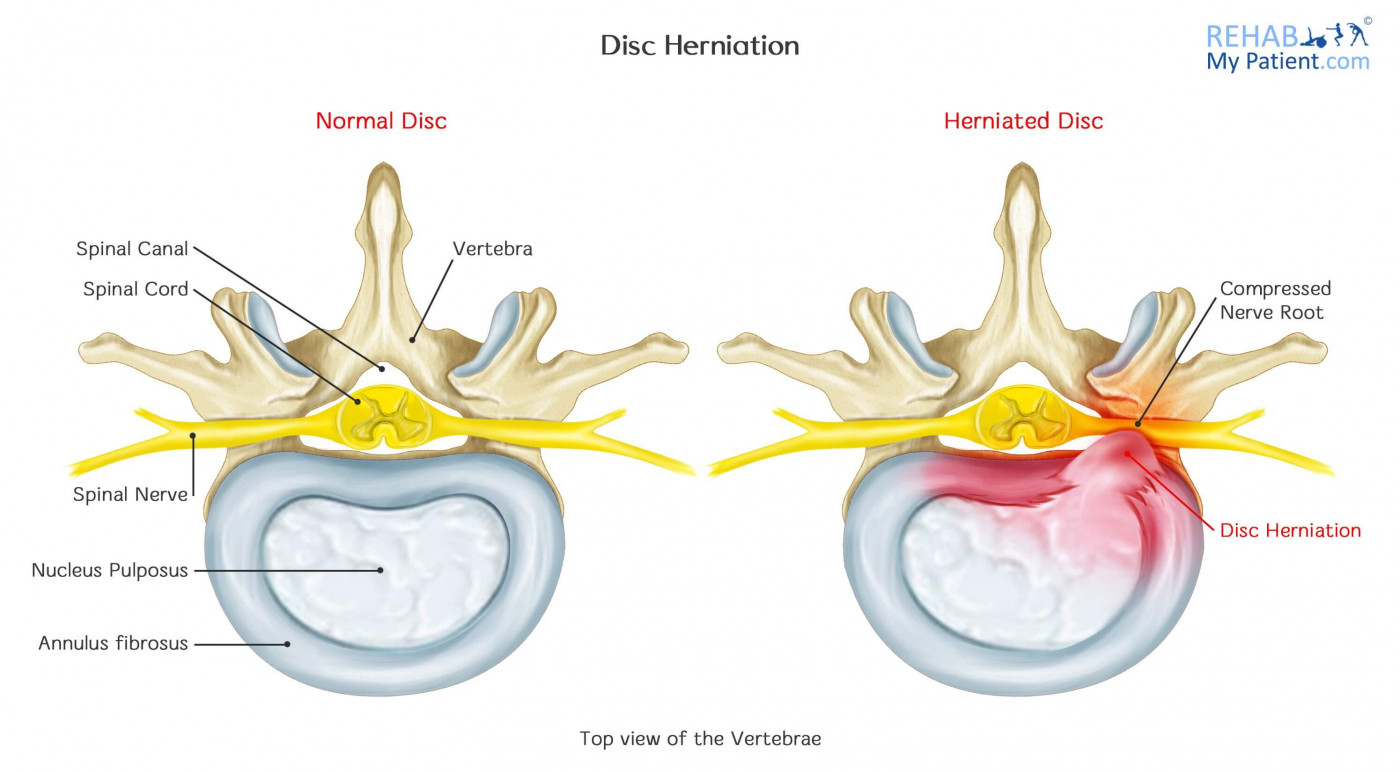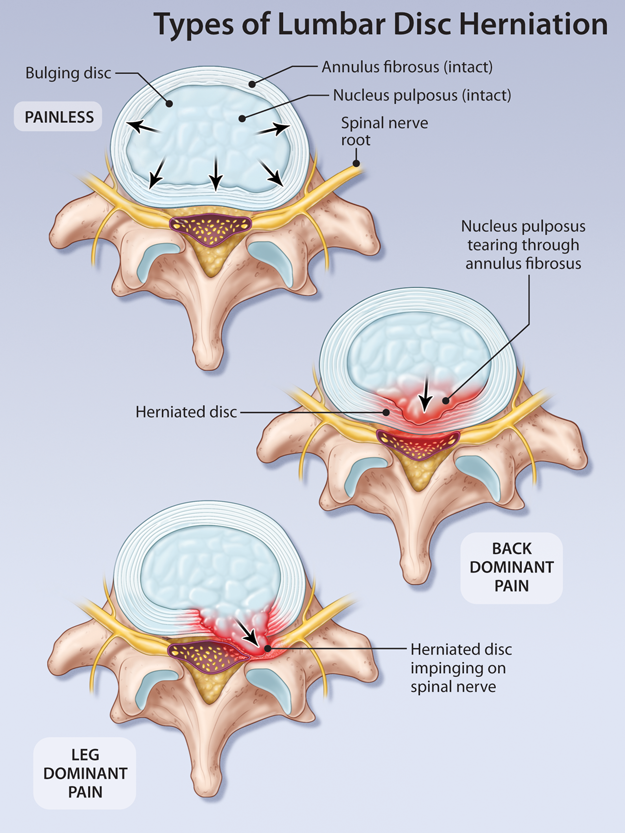

Medications such as an anti-inflammatory to reduce swelling and pain, muscle relaxants to calm spasm, and narcotics to alleviate acute pain.There are many non-surgical treatments to help relieve symptoms. Pain associated with herniated disc often resolves within 4-6 months. The majority of disc herniations do not require surgery. Obesity, lack of regular exercise, tobacco use.Aging discs gradually dry out, losing strength and resiliency.Incorrect and/or repetitive lifting or twisting.Excessive force to the spine i.e., falling or collision injuries.Factors that can increase risk for disc herniation include: Herniated discs are most common in young and middle-aged adults. Numbness or tingling in the shoulder or arm.Pain that radiates down into the arm, hand or fingers.Mild to sharp pain in the neck or between the shoulders blades.Symptoms of a cervical (neck) herniated disc may include: Sciatica (pain, burning, tingling, or numbness that extends from the buttock into the leg or foot).Symptoms of herniated disc in the lower back include: The location of the herniated disc and the severity of the herniation dictate symptoms.

In contrast, if a herniated disc is not pressing on a nerve, mild pain may be the only symptom. When a herniated disc presses on a nerve, pain, numbness, and/or weakness of the affected area may result. Herniated discs can occur in any area of the spine however, they are more likely to occur in the lower back. In addition, the gel-like center releases chemical irritants that can cause nerve inflammation and pain. The displaced disc may compresses nearby spinal nerves or exert pressure on the spinal cord. The outer ring of thick fibers attaches to the vertebrae and holds the disc in place.Ī herniated disc occurs when the outer fibers tear or rupture and the gel-like center moves out of its normal position and into the limited space of the spinal canal. Each disc is made up of a strong outer ring of fibers called the annulus fibrosus and a soft, gel-like center called the nucleus pulposus. These discs allow the spine to move and also act as shock absorbers preventing the bones of the spinal column from grinding against one another. The spine is made up of a column of bones separated by spongy intervertebral discs.


 0 kommentar(er)
0 kommentar(er)
